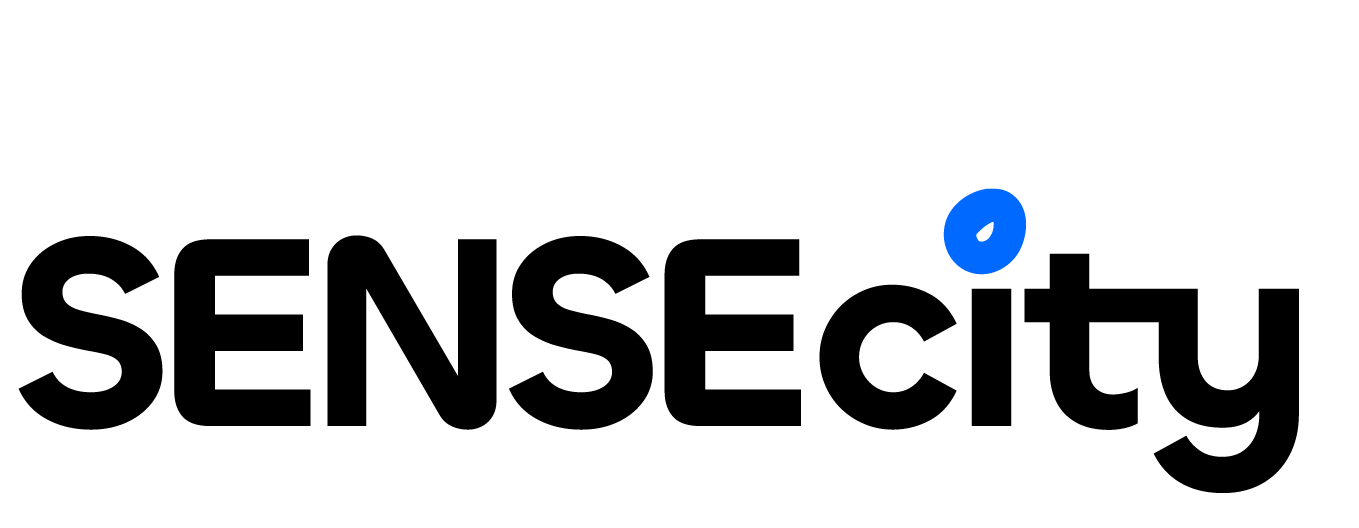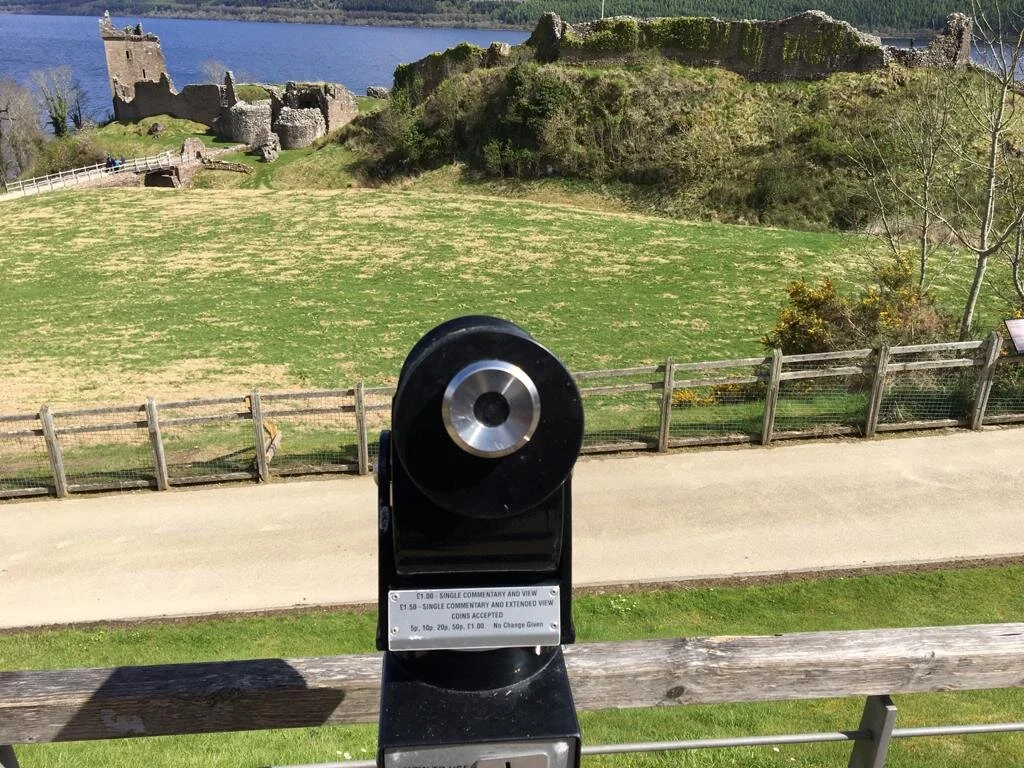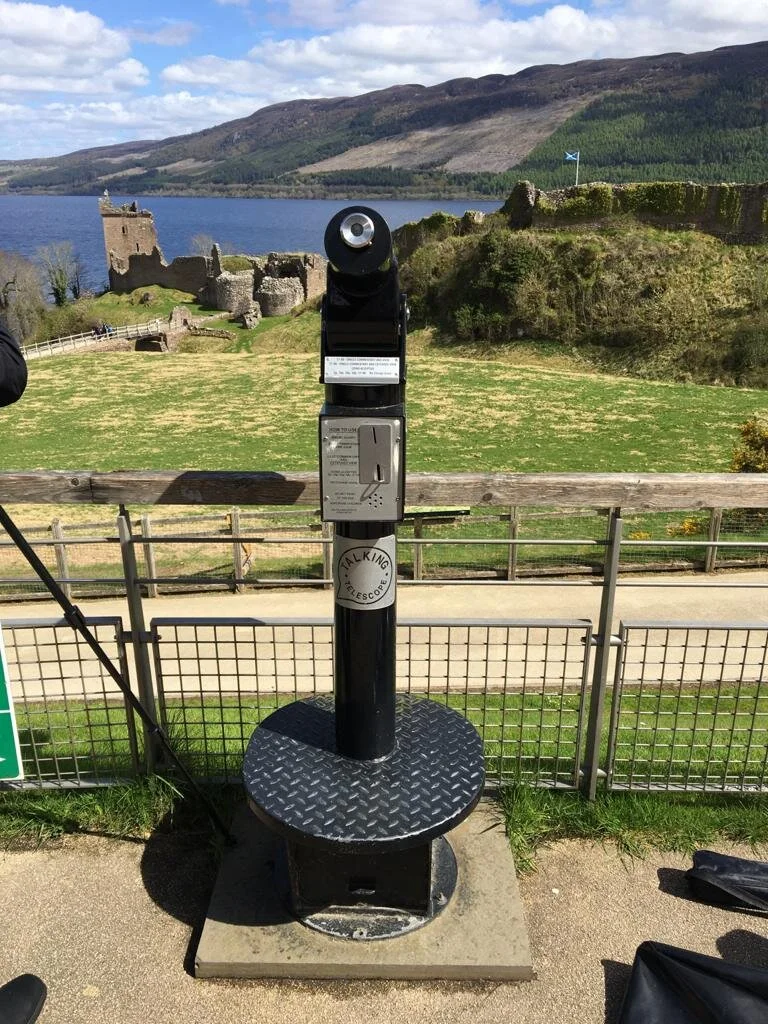The Historiscope : An AR-enabled viewing scope at the Historic Environment Scotland’s Urquhart Castle
This is the 2nd Blog in our Historiscope series - leading on from our overview of the project found here; https://www.sensecity.co/blog/2022/4/25/designing-an-augmented-reality-experience-for-urquhart-castle
Recap
In 2020, Pooja Katara, founder of SENSEcity, teamed up with Archaeologist and Heritage Scientist Tiomóid Foley for the 2nd Round of Creative Informatics Challenge Projects. The challenge given by Historic Environment Scotland was to develop a new product that would allow for visitors to engage more directly with a monument from a precise outdoor viewpoint, by delivering a range of content including historical and archaeological reconstructed inaccessible views.
The mission, as we chose to accept it, was basically to reimagine the telescope (not the wheel in this case). With a prime testing ground at the famous Urquhart castle on the Bonnie Banks of Loch Ness. Public disclaimer- we were unable to stretch the historical accuracy to have Nessie in the scene, in this particular instance, sorry to disappoint!
The Historiscope’s final location will be in the Highlands of Scotland, about a 45 minute drive from Inverness airport and 30 minutes from the Bus Station in Inverness City
Landscape of Urquhart Castle, on the banks of Loch Ness, Point of View from the current telescope
Background: So why a Telescope?
So this may beg you to ask the question, why reimagine the telescope? Why are we here?
Well, that question really has its roots in history, as previous telescopic experiences very much relied heavily on the technology and processes available at the time.
What came after was the evolution of a proto-combined audio-visual tour guide experience, where you would have an audio tour guide, directing the user experience, via voice over, as you looked through the scope - which is very much the case at Urquhart castle today. However, it must be noted, as technology and generations moved on, so did the need for these experiences to adapt, or perhaps risk becoming less engaging.
Historiscope: Defining a New Product
The need to evolve a user experience at the site, to engage visitors in a new way with the broader Historic Environment is what led HES to put out an innovation call, and SENSECity answered, pitching the new age telescope, “Historiscope.” Historiscope, gives you a snapshot back into a particular moment in time, thus merging new hardware design with visual reconstructive AR experiences. We proposed merging AR software, with the hardware design process, in a new way within the Heritage sector.
Designing the future, by innovating a merged software with hardware AR user experience
Table illustrating some of the thought process involved in the design process of the Historiscope
An Ode to Historiscope (To Keep you Guessing on the Final Design)
As the user then walks up to the Historiscope, they are not only then met with a design that complements the broader Historical landscape and its environs, but an anthropomorphic design. Historiscope is not just a digital experience, but a new artistic interpretation and symbolic representation of the Human experience at Urquhart. Incorporating an almost metallic sculpted ancient monolithic type design, with an almost futuristic type of headset resting on top, where the past meets the present in the historic environment. Thus, offering plenty to think about and meaning to be drawn by the user.
Semi-reflective in nature, the Historiscope will not only cause deep reflection in the user, but will reflect the broader historical landscape around it on its base surface, whilst also incorporating colour to compliment the unwritten code of the landscape on select parts of its body.
Site Visit
On the 11th of May 2021 after delaying our site investigation due to the COVID-19 restrictions, SENSEcity’s Research and Design team went to Urquhart and gathered field data. From this visit, we not only took some measurements and undertook a survey, but we also managed to talk with the boots on the ground, the stewards and other staff. From our initial conversations, we found that the stewards found it hard to engage visitors in a way that helped them visualise the history of the Castle. The idea for them that the “Historiscope” could offer a ‘see for yourself’ type experience was welcomed as making the job of engaging users easier after they are first met with a historically accurate but exciting visualisation before the guided tour.
Our Defining Statements
“Historiscope, acts as another tool in the tour guide's arsenal, not taking away from the guided experience, but adding to it.”
“Historiscope is a device that gives you a snapshot of history by transporting you back to a particular moment in time, by merging telescopic hardware, and digital AR experiences”
“With it, Historiscope brings new “Historiscopic” experiences, thus allowing a viewer to have a snapshot back into a particular moment in time”
Location, Location, Location…
One of the most difficult things in designing a historical reconstruction through an AR scene is deciding at what point in the landscape you are going to place it. Before our site visit to Urquhart Castle, the team was working off laser scan or LiDAR data provided by the HES Digital Documentation and Innovation teams based at the Engine Shed, Stirling, in order to ascertain dimensions and layout.
For example only: The power of AR in Unveiling the Historic Landscape. Sketch Superimposed over LiDAR. The Image on the right is looking back towards the Visitor Centre where the Historiscope will be installed
The image on the left gives a sense of just how powerful an AR-enabled scope can be when unveiling a reconstructed historic environment. We are also able to give a sense of what life was like in front of the castle without taking away from the heritage that is already there, merely adding another layer of reality onto it. Allowing the user to visualise what life was like at a particular moment in time and engaging the user with the broader landscape archaeology which existed in front of the castle as well as what you can see or is inside.
The Chosen Narrative
To view, or what not to view, that was, the primary question…
One of the challenges we faced as a team was what period of time do we focus on? A castle, such as Urquhart, is steeped in rich history. Not to mention, the clothing fashions and architectural designs change sometimes as fast as per-the-decade - never mind century! This meant we needed to focus on periods of time where there were sufficient archival or historical datasets that we could make use of via HES.
Our historical research took us from Pictish hillforts to potential sieges in the name of freedom, right through to Jacobite uprisings. As is the case with a lot of castles, we would always hear about the warfare. Both our partner HES and we were quite keen on looking at a snapshot of everyday life beyond the wall, or in front of it as was in our case!
So as it stands, we started off by looking at the warfare on the site. We then move toward building a picture of the castle in times of peace, which arguably would have been most of its unwritten history, which then led us to review archaeological findings at the site. We found evidence for a Castletoun, within the archaeological grey literature, which is what we decided to focus our efforts on. A Castle Toun, showing everyday life during the 15th century.
An Iterative and Reconstructive Process
Within the initial stages of archival research and reviewing the archaeological remains found by GUARD archaeology in 2000 on the building of the new visitor centre, It was identified that there was a building found suspiciously similar in floor plan and design to one reconstruction found at the Highland Folk Museum, namely “The Big Cheese”. Archaeological remains suggest that half the building was almost like a workshop or storage facility, with the other part having domestic wear.
To Left: Plan of Timber Hall from the GUARD Report (Image courtesy- GUARD Report)
To Right: Example from the Highland Folk Museum of what this Structure may have looked like (Image courtesy- Highland Folk Museum)
Here is what our project partners have to say:
‘For centuries, Urquhart’s once-vibrant castletoun was known only to the archaeologists who revealed its scant remains. We are really hopeful that through dynamic augmented reality, the Historiscope will give our visitors a chance to glimpse this remarkable settlement and the people (and animals) who lived and worked there in the Middle Ages.’ by Steve Farrar, Interpretation Manager at Historic Environment Scotland
‘We are really excited to see the innovation already emerging from this collaboration between Sensecity and Historic Environment Scotland, with the Historiscope bringing together the digital and tangible experience in an experience that feels genuinely new but also very approachable for visitors. As a programme obsessed with the potential to do new things with data, we have also been delighted that in designing these new views into the site's past, Sensecity have played a role in triggering a wider reappraisal of HES' rich data sets and the history and stories told about Urquhart Castle.’ by Nicola Osborne, Programme Manager at Creative Informatics
Impact & Future Aspirations
Once the Historiscope has been fabricated and tested on-site, we will aim to make it available for the general public to enjoy by the end of 2021! In a few months from now, the team dreams to see many Historiscopes across Scotland’s Heritage sites that will invite people to peak into beautiful stories from the past!
Concluding Remarks
Author
Historiscope Project Manager & Researcher: Tiomóid Foley on behalf of SENSECity
Edited by
Pooja Katara: Founder and Director of SENSECity
With Special Thanks to
Daniel Blake: Our Product Designer to who we owe a great deal of gratitude in the hardware design and all elements of this project.
Christopher Muniz: Former Experience Designer at Historic Environment Scotland
Michaela Turner: Former Creative Informatics Business Development Manager
Ashutosh Soni: Our 3D Artist and Software Developer
Zachary Sorrells: Our Business and Sales advisor from the Startup Sales Lab
About Creative Informatics Challenge Projects
SENSEcity won the 2nd Round of the Creative Informatics Challenge Project where five organizations were selected to progress for funding for 5 separate Challenge Projects. You can find out more about Creative Informatics here.
Contact Details
For any enquiry related to the HIstoriscope Project; or if you would be interested in developing a product for your own site, please contact: pooja@sensecity.co













